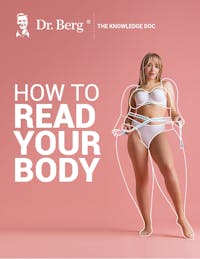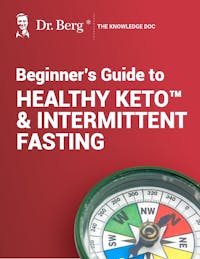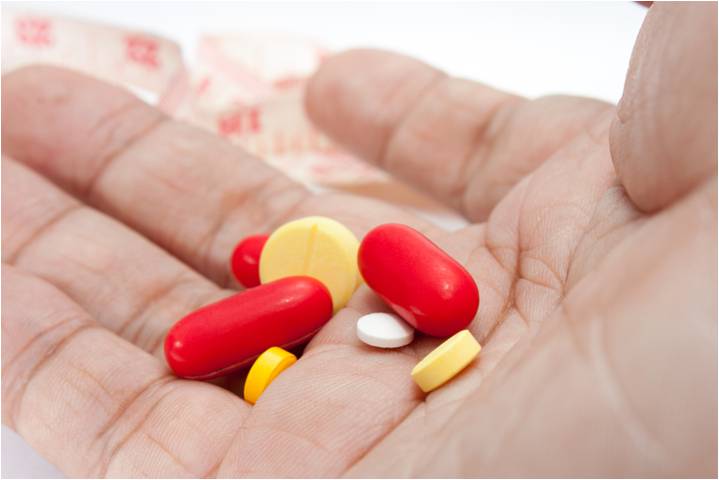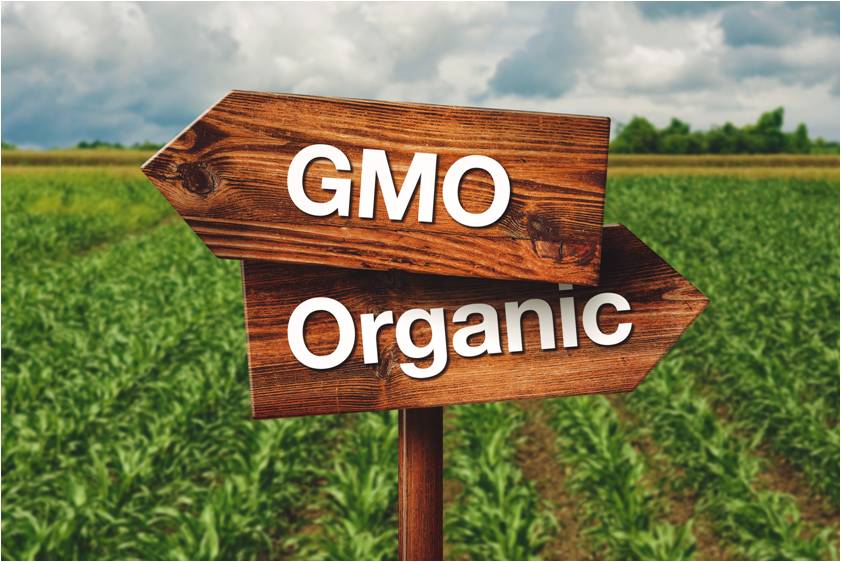Why Estrogen Dominance Occurs After Menopause

How to Read Your Body
Learn to recognize common symptoms and uncover their underlying health issues
Understand the signs of nutrient deficiencies to manage your health
Explore the four metabolic body types and the core factors that influence them
Interpret your body's signals from head to toe to identify potential health concerns

How to Read Your Body
Learn to recognize common symptoms and uncover their underlying health issues
Understand the signs of nutrient deficiencies to manage your health
Explore the four metabolic body types and the core factors that influence them
Interpret your body's signals from head to toe to identify potential health concerns

How to Read Your Body
Learn to recognize common symptoms and uncover their underlying health issues
Understand the signs of nutrient deficiencies to manage your health
Explore the four metabolic body types and the core factors that influence them
Interpret your body's signals from head to toe to identify potential health concerns

How to Read Your Body
Learn to recognize common symptoms and uncover their underlying health issues
Understand the signs of nutrient deficiencies to manage your health
Explore the four metabolic body types and the core factors that influence them
Interpret your body's signals from head to toe to identify potential health concerns

How to Read Your Body
Learn to recognize common symptoms and uncover their underlying health issues
Understand the signs of nutrient deficiencies to manage your health
Explore the four metabolic body types and the core factors that influence them
Interpret your body's signals from head to toe to identify potential health concerns

How to Read Your Body
Learn to recognize common symptoms and uncover their underlying health issues
Understand the signs of nutrient deficiencies to manage your health
Explore the four metabolic body types and the core factors that influence them
Interpret your body's signals from head to toe to identify potential health concerns

How to Read Your Body
Learn to recognize common symptoms and uncover their underlying health issues
Understand the signs of nutrient deficiencies to manage your health
Explore the four metabolic body types and the core factors that influence them
Interpret your body's signals from head to toe to identify potential health concerns

How to Read Your Body
Learn to recognize common symptoms and uncover their underlying health issues
Understand the signs of nutrient deficiencies to manage your health
Explore the four metabolic body types and the core factors that influence them
Interpret your body's signals from head to toe to identify potential health concerns

How to Read Your Body
Learn to recognize common symptoms and uncover their underlying health issues
Understand the signs of nutrient deficiencies to manage your health
Explore the four metabolic body types and the core factors that influence them
Interpret your body's signals from head to toe to identify potential health concerns

Beginner’s Guide to Healthy Keto & Intermittent Fasting
Receive a step-by-step guide to starting Healthy Keto® and intermittent fasting
Learn about foundational principles and best practices for beginners
Get detailed visual guidance on portion sizes and meal composition
Discover how to set achievable goals and monitor your progress
Find practical tips for overcoming common challenges and staying motivated

Beginner’s Guide to Healthy Keto & Intermittent Fasting
Receive a step-by-step guide to starting Healthy Keto® and intermittent fasting
Learn about foundational principles and best practices for beginners
Get detailed visual guidance on portion sizes and meal composition
Discover how to set achievable goals and monitor your progress
Find practical tips for overcoming common challenges and staying motivated

Beginner’s Guide to Healthy Keto & Intermittent Fasting
Receive a step-by-step guide to starting Healthy Keto® and intermittent fasting
Learn about foundational principles and best practices for beginners
Get detailed visual guidance on portion sizes and meal composition
Discover how to set achievable goals and monitor your progress
Find practical tips for overcoming common challenges and staying motivated

Beginner’s Guide to Healthy Keto & Intermittent Fasting
Receive a step-by-step guide to starting Healthy Keto® and intermittent fasting
Learn about foundational principles and best practices for beginners
Get detailed visual guidance on portion sizes and meal composition
Discover how to set achievable goals and monitor your progress
Find practical tips for overcoming common challenges and staying motivated

Beginner’s Guide to Healthy Keto & Intermittent Fasting
Receive a step-by-step guide to starting Healthy Keto® and intermittent fasting
Learn about foundational principles and best practices for beginners
Get detailed visual guidance on portion sizes and meal composition
Discover how to set achievable goals and monitor your progress
Find practical tips for overcoming common challenges and staying motivated

Beginner’s Guide to Healthy Keto & Intermittent Fasting
Receive a step-by-step guide to starting Healthy Keto® and intermittent fasting
Learn about foundational principles and best practices for beginners
Get detailed visual guidance on portion sizes and meal composition
Discover how to set achievable goals and monitor your progress
Find practical tips for overcoming common challenges and staying motivated

Beginner’s Guide to Healthy Keto & Intermittent Fasting
Receive a step-by-step guide to starting Healthy Keto® and intermittent fasting
Learn about foundational principles and best practices for beginners
Get detailed visual guidance on portion sizes and meal composition
Discover how to set achievable goals and monitor your progress
Find practical tips for overcoming common challenges and staying motivated

Beginner’s Guide to Healthy Keto & Intermittent Fasting
Receive a step-by-step guide to starting Healthy Keto® and intermittent fasting
Learn about foundational principles and best practices for beginners
Get detailed visual guidance on portion sizes and meal composition
Discover how to set achievable goals and monitor your progress
Find practical tips for overcoming common challenges and staying motivated

Beginner’s Guide to Healthy Keto & Intermittent Fasting
Receive a step-by-step guide to starting Healthy Keto® and intermittent fasting
Learn about foundational principles and best practices for beginners
Get detailed visual guidance on portion sizes and meal composition
Discover how to set achievable goals and monitor your progress
Find practical tips for overcoming common challenges and staying motivated
Why Estrogen Dominance Occurs After Menopause
Dr. Eric Berg DC
Today, we’ll talk about why estrogen dominance occurs after menopause.
Most women find this paradoxical, thinking, “If all my hormones are disappearing, how can I possibly be estrogen-dominant?”
This is one of those burning questions women have. Think about it—the ovaries go into retirement and stop working after the age of 52. So, you think that estrogen would go down, not up... right?
So why do women become estrogen-dominant, which places them at risk for cancer and all kinds of other issues after menopause?
Let me show you why.
First, let’s talk about the symptoms of estrogen dominance.
Breast tenderness
Irritability
Depression
Cravings for chocolate
Weepy and emotional state
Cystic acne
Weight in the hips, the thighs, and a pouch in the stomach
Low libido
Fibroids
Cancer
Endometriosis
In fact, estrogen is the source of cancers in the breast and in the uterus. It takes the presence of estrogen for these cancers to develop.
Facts about Estrogen
Estrogen does drop after menopause.
But progesterone drops even more, giving estrogen dominance (a higher ration) than progesterone.
If you have estrogen at a level of four, say, and progesterone drops to a level of 1, you will have estrogen dominance over progesterone. And progesterone is a hormone that opposes estrogen.
It counters it.
So if you drop progesterone down too far with no opposing estrogen, it can appear to be higher and more damaging.
Now, the adrenal glands are the backup to the ovaries. So, during menopause, the adrenal glands will make the same hormones that the ovaries do.
Now, we’ve all heard of adrenal fatigue, which creates feelings of overwhelming fatigue and an inability to lose weight.
What’s happening is that the adrenals are being stressed by this lack of hormone presence and start over - churning out hormones in an effort to get more cortisol and create homeostasis.
This increased need for cortisol further depletes progesterone which is used to make cortisol. Because progesterone is being shunted off to make cortisol, less is available to balance the progesterone. This equals estrogen dominance.
Progesterone and Cortisol
Progesterone feeds cortisol. In fact, progesterone converts into cortisol. If the body needs more cortisol, which is a stress hormone from the adrenal, it will get some of this cortisol from progesterone.
So here we have this situation where the adrenals are weak and you have low cortisol. So, your body is going to rob what little bit of progesterone that you have to try to create more cortisol.
What would happen with estrogen then? It’s already high. Now, it will appear even higher because there’s no opposing hormone progesterone. We’re talking about the last little bit of progesterone to produce cortisol.

The Adrenals and Estrogen
Actually, the weak adrenals are behind this whole problem. They are forcing other parts of the body to be depleted because the adrenals consider countering and alleviating stress to be the most important thing to do of anything they have to do.
They want more cortisol to do this, as cortisol for them is a stress-balancing hormone. It will rob from this and take from that—anything to keep the adrenals strong.
If you have low adrenals, adrenal fatigue, or adrenal stress, your body wants cortisol badly. So the body begins looking throughout the body for more progesterone so it can make more cortisol. This creates that low progesterone, high estrogen ratio.
So, basically, increased need for cortisol depletes progesterone.
The Estrogen-Fat Connection
Your own fat makes estrogen. So the more fat you have, the more estrogen you’re going to have because fat makes estrogen. It looks for more fat in the fatty areas of the body and basically makes estrogen out of fat. Unfortunately, it doesn’t rob the fat. It just uses fat to manufacture more estrogen and more fat. See, estrogen also MAKES fat. So this is a kind of a never-ending nightmare.
Past and Present Treatments for Estrogen Dominance
They used to use something called estrogen replacement therapy. They don’t use it anymore because they found it causes cancer. Then they switched it to hormone replacement therapy (HRT) and added progesterone into the mix.

This was called estradiol.
Then they found that estradiol also creates side effects and cancers, and they added Provera, which is synthetic progesterone.
Then they took Estradiol, added progesterone, then added estrogen, and then they found that this, too, had some side effects with cancer, and then added Provera, which is synthetic progesterone.
Then they started to use Prempro, which is estrogen and synthetic progesterone together.
Of course, the problem is that all of these treatments are synthetic and cause other problems in the body. Yet, these are typically the solutions women seek for hot flashes, night sweats, and vaginal dryness.
Natural Treatments for Estrogen Dominance, Hot Flashes, and Other Menopausal Symptoms
But there are some other things you can do that are natural. I’ll have a link below about that and how to treat low estrogen.
Understanding Estrogen in All Its Forms and Where You’re Getting So Much of It
There are three major naturally occurring forms of estrogen in the bodies of women.
Estrone (E1)
Estradiol (E2)
Estriol (E3)
Estrone is a known carcinogen. It causes cancer and converts to estradiol.
The other form of estrogen is called estriol. Estriol is the third type of estrogen and it’s like a waste product of estradiol.
It’s basically there to buffer estradiol. If estradiol is too high, you’ll get cancer. It’s there to balance and buffer because estriol is anti-cancer and it protects you against the bad estrogen, so to speak.
Estrone—is the type of estrogen after menopause, and it’s made from androgens, like testosterone. Basically, it’s a little estrogen complex, but you can make more estrogen if you have high androgens.
There’s a condition called PCOS and that’s a situation where you have too much androgen hormone in the female body. How can a woman have too much androgen (testosterone and other male hormones)?
Well, what causes androgens to spike is Fat Storing Hormone.
So, if you have an Fat Storing Hormone problem or Fat Storing Hormone resistance, you can get high androgens and PCOS from that, too.
When men have too many androgens, this will convert to estrogen and that’s what causes the man breasts, the prostrate to enlarge, and the low libido.
Androgens, Aromatase, and Estrogen
There’s an enzyme that converts androgen to estrogen and it’s called aromatase. Aromatase is always seen in people with breast cancer or prostate cancer. It’s higher in these people.
And that’s because the source of that cancer is fed by estrogen made from aromatase, and it’s converting the androgen to more estrogen.
So, you can see there are a lot of different places where estrogen is being produced, from progesterone, from the environment, from synthetic medications, and from your own androgen hormones.
Estrone can also cause erectile dysfunction in men. Men often have these prostate issues because their estrogen increases as their testosterone is going down.
In fact, this whole theory that high level of DHT causes prostate cancer is a myth because what they use to treat prostate enlargement is DHT.
But then, it’s really estrogen that causes the enlarged prostate.
Other Sources of Estrogen: What You Eat and the Environment
When it comes to where we get estrogen dominance, think about the pollutants you’re putting inside your body and that you encounter in the environment - plastics, pollutants, and cleaning products that contain the same kinds of poisons as these pesticides do.

Then we have the hormones in animal products that you eat if you don’t eat the organic or hormone-free, and the same thing with dairy—the products of these hormone-injected soy and corn-fed cattle.
Xenoestrogens are products in the environment such as pesticides, herbicides, and insecticides. These poisons all mimic estrogen in the body.
I do not believe that it’s the estrogen your body makes that causes the cancer. I believe it’s from other sources.
...I believe that there’s something environmental that’s really causing the cancer.
GMOs
The last thing I want to talk about is GMOs, or Genetically Modified Goods.

Right now, the big ones are
soy
corn
beets
All the beet sugar in the US is genetically modified. Soy and corn are genetically modified, too. And what are the animals we eat fed on?—soy and corn. These are polluted soy and corn that are also GMO, not to mention the hormones cattle are injected with to make them bigger and to produce more yield.
So, eat organic meat from animals that are grass-fed or pasture-fed only, and those that use dairy products from animals that are grass-fed and organic, too.
So to avoid putting estrogens in your body, simply DO NOT EAT THEM.
The problem with many of the foods we eat is the GMO or the lack of GMO content is not labeled in the stores, and the problem is that when they make something GMO is that it is modified to resist herbicides.
So they have to make a strong killer to keep weeds and pests out of their crops, and they design it to not kill the corn or soy—just to kill everything else in its path from weeds, to insects, to rodents.
Now, if we cannot taste these, it’s doubtable the animals can, so these predators keep eating them and not dying from them anymore, because they are becoming more resistant to pesticides (just as we become more resistant to antibiotics).
So it’s taking more and stronger pesticides to ward off anything on the crop-destroying, and we’re eating these pesticides. Around 52 different kinds with each stalk of celery.
These poisons do have consequences on our health, guys.
Glysophates—The Poison of the Century
The root problem in these GMOs has a chemical name, which is glyphosate.
Glysophates are poisons in pesticides and herbicides that are used widely today on GMO crops. They are highly toxic even when ingested in small amounts, as this study evidences here.
Glyphosate is fat-soluble not water-soluble, so it stores in the body. (It is not flushed.)
Now, there are certain studies indicating that the GMO crop pesticides such as the glysophates can affect your endocrine system in parts per trillion.
If you want to get a picture in your mind of what parts per trillion means, picture this:
Let’s say you had 600 train trucks filled with water. And I took one drop of this glyphosate and diluted it into 600 train trucks.... that’s the dilution kind of dilution—the mere amount ingested, that you would need to affect your own endocrine system.
It’s a very small amount that are affecting everyone on a massive scale.
I think this is what’s creating estrogen dominances; this plus the soy, which is also highly estrogenic.
The chemicals in Round Up that -- beyond the glyphosates -- are estrogenic and can cause a lot of problems. So, there’s a lot of things messing up and raising your level of estrogen. Now, let me show you what to do about it.
What to Naturally Do about Estrogen Dominance
1. Eat organic vegetables only.
These won’t have the GMOs and pesticides that are acting as estrogens in your body.
2. Eat hormone-free meats.
Try to eat meat from grass-fed animals only. These will be devoid of GMOs from corn and soy feed.
3. Take iodine supplements.
Iodine is important with estrogen dominance because it helps maintain the hormone regulating thyroid and to help maintain the estriol (anti-cancer) form of estrogen in the body. Iodine also helps lower estrogen. I get my iodine in sea kelp.
4. DIM (concentrated phytonutrient from cruciferous vegetables)
DIM is an aromatase inhibitor and cruciferous vegetables have this. DIM is a concentrated cruciferous vegetable, helping you to get the estrogen-balancing cruciferous vegetables without having to ingest too many bloat-inducing vegetables.
5. Nettle root
Nettle root is a wonderful, natural aromatase inhibitor. It’s good for the prostate and for lowering estrogen. Also, it is good as an anti-inflammatory.
6. Eat lots of cruciferous vegetables if you don’t take the supplement. These are estrogen inhibitors..
7. Cortisol Support
My Cortisol Support formula goes deeper into the adrenals to heal the body and create hormonal homeostasis. It’s basically for someone who has low cortisol, not high cortisol.
8. Chaste tree and black cohosh are good herbal supplements as well that can lower estrogen in the body.
Keep in mind that all the symptoms of estrogen dominance, such as joint pain and inflammation, are not really from the estrogen so much as it's from an adrenal imbalance.
If all else fails...
If you’ve tried everything and it’s still bad, might try progesterone cream. It is pretty powerful.
Or try my Cortisol Support formula. This is for low cortisol, again, and it gives the adrenals a chance to come up without stealing your progesterone. It’s pretty powerful and synthetic.
I prescribe it for hot flashes as well. This will mainly help support adrenals during menopause.
I’d love to hear from you. Please write your comments and questions below.
Understand estrogen dominance and Learn More about Hormones from Dr. Berg Video Blog.
Dr. Berg.
Previous blog
The Best Time to ExerciseNext blog
Two Tests for Adrenal FatigueTags

Popular
08/21/2024
40.9K views
05/22/2024
37.2K views
11/18/2024
217.1K views
03/18/2024
11/21/2022




